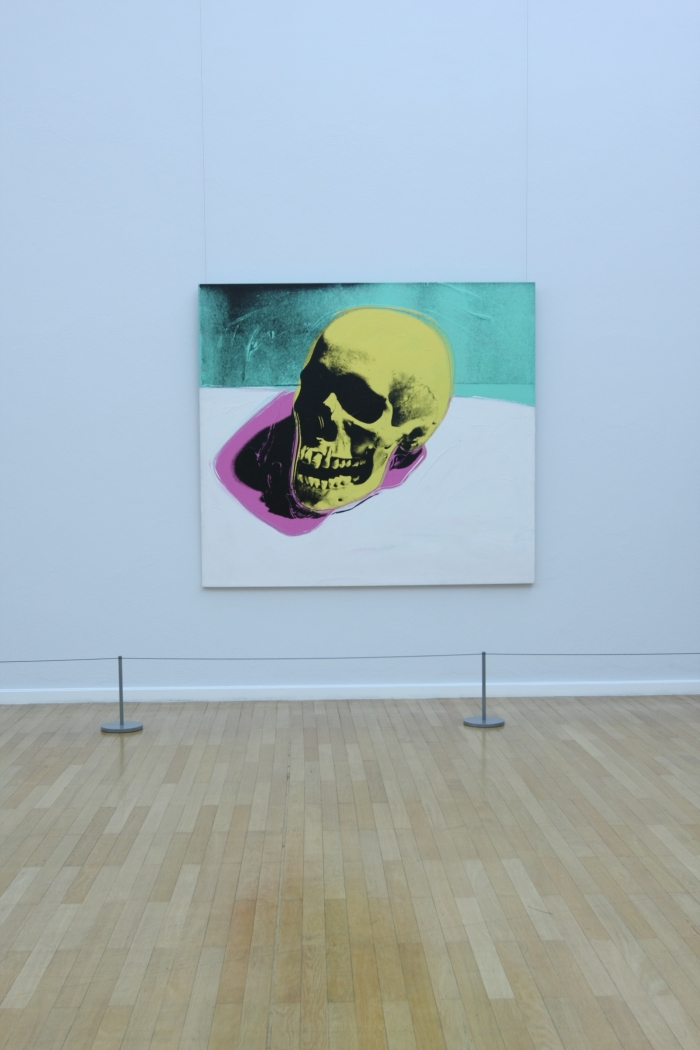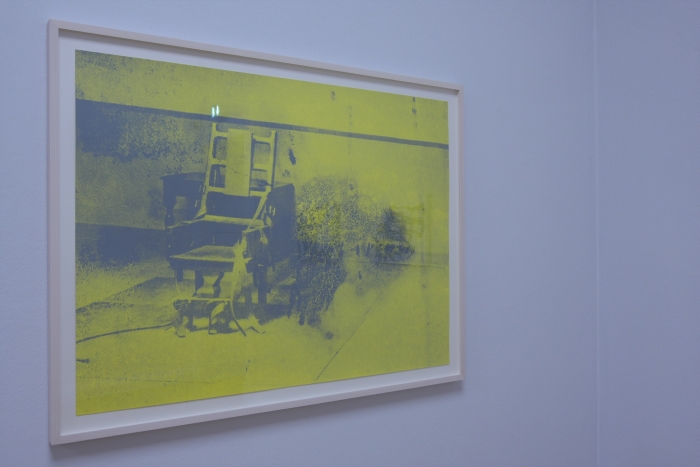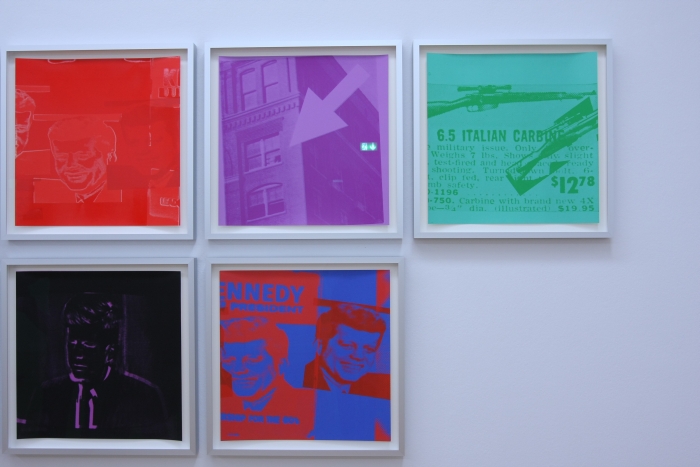Andy Warhol – Death and Disaster at the Kunstsammlungen Chemnitz. Reprise.
Until February 22nd the Kunstsammlungen Chemnitz is presenting the exhibition Andy Warhol: Death and Disaster, according to the organisers “the first European museum exhibition devoted exclusively to this topic”
Correct. The first European museum exhibition.
But not the first European exhibition devoted exclusively to this topic.
On January 13th 1964 Andy Warhol’s first solo exhibition in Europe opened at Galerie Ileana Sonnabend in Paris. Although officially titled “Warhol”, the exhibition is more popularly known under its 1963 working title “Death in America”, and presented works such as Tunafish Disaster, Orange Car Crash and Electric Chair. It is also notable for seeing the very first public presentation of Warhol’s 1963 work Race Riot.
Equally notable is that the theme of the Paris show was chosen by Warhol himself, and realised despite initial opposition from Ileana Sonnabend.
Part of that opposition focussing on the question off what Pop Art actually was.
For many in the early 1960s Pop Art was about misappropriating commercial art as high art and about celebrating the light, easy banality of contemporary popular culture, the booming American economy and increasing economic and social security. It was fun. Silly even.
A state of affairs beautifully summed up in 1963 by artist Tom Wesselmann, “Some of the worst things I’ve read about Pop Art have come from its admirers. They begin to sound like some nostalgia cult – they really worship Marilyn Monroe or Coca-Cola. The importance people attach to things the artist uses is irrelevant”1
Following Warhol’s Paris exhibition however the wider public began to understand that Pop Art was about much more, or in the words of critic John Ashbery writing in the New York Herald Tribune, the Paris show “marks a turning point in the Pop movement. Hitherto Pop art [sic] has been greeted by its enemies with snickers and guffaws, but it is unlikely that Warhol’s new work will cause much mirth, sarcastic or otherwise”2
Interesting in this respect is that many of the works shown in Paris had already been included in Warhol exhibitions in America. Had however tended to be overlooked. Or just plain ignored.
We’re not going to claim to have read all reviews of Warhol’s American shows of 1962/63, but those we have read tend to focus on soup tins, dollar bills and Elvis Preslies rather than the violent.
A particularly good example of just how anonymous the works were can be seen from Stuart Preston’s New York Times review of Warhol’s very first solo “Pop Art” exhibition at the Stable Gallery New York in November 1962. “Shock value is built into pop art [sic]”, notes Preston, before adding confidently that “Andy Warhol, one if its stellar performers, capitalizes on just that in recent paintings at the Stable Gallery.”
The shock in question coming from “images such as coca-cola bottles; Marilyn Monroe’s radiant smile; and Elvis Presley’s sensual sulkiness [which] are repeated in rows as if the canvases had been sprayed by image-making machine guns”3 Stuart Preston obviously being less shocked by “129 Die” and its brutal depiction of a fatal air accident which shared the Stable Gallery’s walls with Messrs Presley and Cola. Yet is not deemed worthy of a mention in his review.
While there are invariably as many reasons for such blindness as their are gallery visitors, for us one of the best, most logical, explanations comes from Warhol’s contemporary Stephen Durkee. In a 1963 interview with ART news magazine Durkee was asked about Pop Art’s relationship to the unsavoury: “The Buddha said, “I show you sorrow and I show you the ending of sorrow”. Andy Warhol is having a show “The American Way of Death” That’s what it is, the interior representation of what he as a human feels. [Robert] Indiana is painting “DIE” or the circle with “DIE DIE DIE DIE” in it. Yet the true implication of these works is an opening of people to the madness and pain which surrounds them; most people will not really see it because they are not prepared to.”4
Following the Paris show and the concentrated, intense presentation of Warhol’s understanding of the modern world, more people were prepared to.
And for all wanting to understand the contemporary importance of the works, Andy Warhol – Death and Disaster can be viewed at the Kunstsammlungen Chemnitz, Theaterplatz 1, 09111 Chemnitz until Sunday February 22nd 2015.
1. Tom Wesselmann in “What is Pop Art? Part II Interviews by G R Swenson”, ART news, Volume 62, Number 10, February 1964
2. John Ashbery “Pop Artist’s Horror, Pictures Silence Snickers,” International Herald Tribune (Paris), January 15th 1964.
2. Stuart Preston “Art: Drawings by Copley: Metropolitan Museum of Art Displays 19 Works of the Colonial Portraitist” New York Times, November 9th 1962
4. Stephen Durkee in “What is Pop Art? Part II Interviews by G R Swenson”, ART news, Volume 62, Number 10, February 1964
Tagged with: Andy Warhol, chemnitz, Death and Disaster, Kunstsammlungen Chemnitz


